History of the village
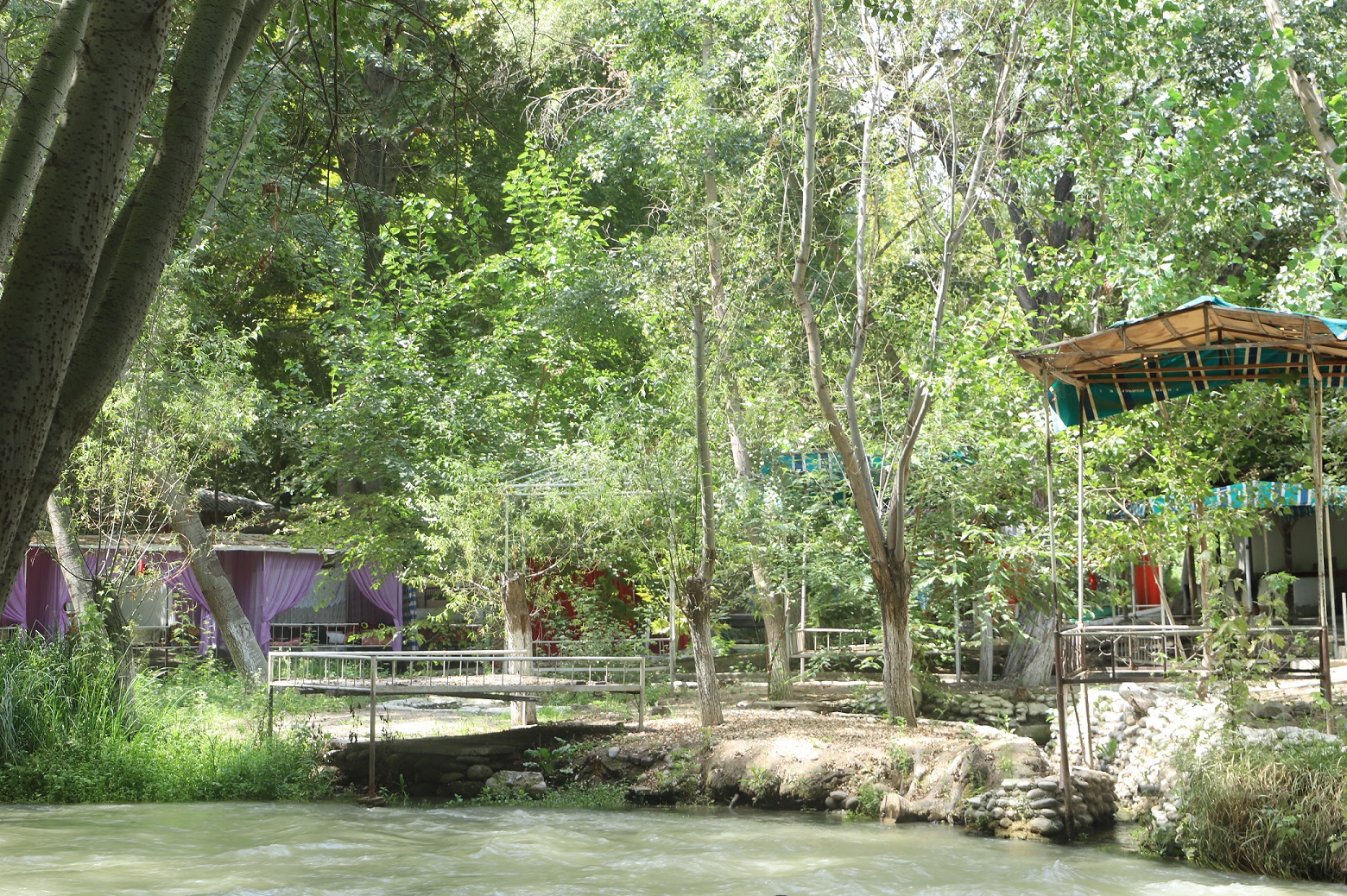
The village of Avval in the Ferghana district appeared much earlier than other villages in this district. Its historical monuments have an ancient history. The name of the village is associated with the name of the third month of the Muslim calendar, Rabi al-Awwal – the month when Muslims celebrate the birthday of the Prophet Muhammad (S. A. V.). According to another version, the name of the village of Awwal came from the Sogdian "avara", which means "fortified". This is confirmed by the discovered remains of a powerful fortress called "Khojam Padshah".
References to the village are found in the works of the 10th-century Arab geographers al-Istakhri, Ibn Hawkal and al-Muqaddas. In the work of al-Istahri, there is a statement: "At first it was a city, and then a whole district was built around it." His work also says: "Avval is located at the foot of the mountain, there are other villages there."
In the Middle Ages, the village lost the status of a city. This was due to the severe destruction by the Mongols, because it is known that the Mongols left almost nothing behind, including the territory of the upper reaches of the Syr Darya.
During the time of the Kokand Khanate, the village of Avval turned into one of the centers of the khanate. Khudoyar Khan ruler of Kokand came here. His brother, Sultan of Margilan Murodbek Begi, personally participated in the construction of the fortress in the village of Avval. In other words, during the time of the Kokand Khanate, the village was included in the list of strategically important places.
The village of Avval occupied a special place in the life of a famous representative of Uzbek literature of the twentieth century, Khamza. Uzbek literary critic Laziz Kayumov said that Khamza's ancestors lived in the village of Avval for six generations.
Khojam Padshah Shrine

It is said that every pilgrim who goes to Shahimardan to the mausoleum of Khazrat Ali should visit the holy tomb of Khojam Padshah in the village of Avval. The mausoleum "Khojam Padshah" was built by local residents in the middle of the XIX century. It existed until the 1940s and was demolished due to the anti-religious policy carried out in those years. Only in the 1960s a small tomb-cell was built over the grave of Khojam Padshah, and in the 1990s the tomb was rebuilt into a full-fledged mausoleum.
Khojam Padshah was born in Ferghana, he was a well-known religious figure and a pious person from the clergy. His name is also associated with the famous name of one of his descendants – Khoja Hasan, who lived at the beginning of the XVIII century. Khoja Hasan is mentioned in written sources as the ruler of Khojam. It is noted that for some time he lived in Margilan.
Khojam Padshah participated in the battles with the Kalmyks who invaded the Ferghana Valley, and provided direct assistance to the local population in expelling the enemy from the territory of Ferghana. Although Khojam Padshah died in the village of Karatal (Republic of Tajikistan), later local residents built a shrine in his honor in the village of Avval. According to another source, when the body of Khojam Padshah was secretly taken from Karatal to Kashgar, the caravan passed through the Ferghana Valley, and the place where the caravan stopped was later turned into a religious shrine.
Khojam Padshah Archaeological Site
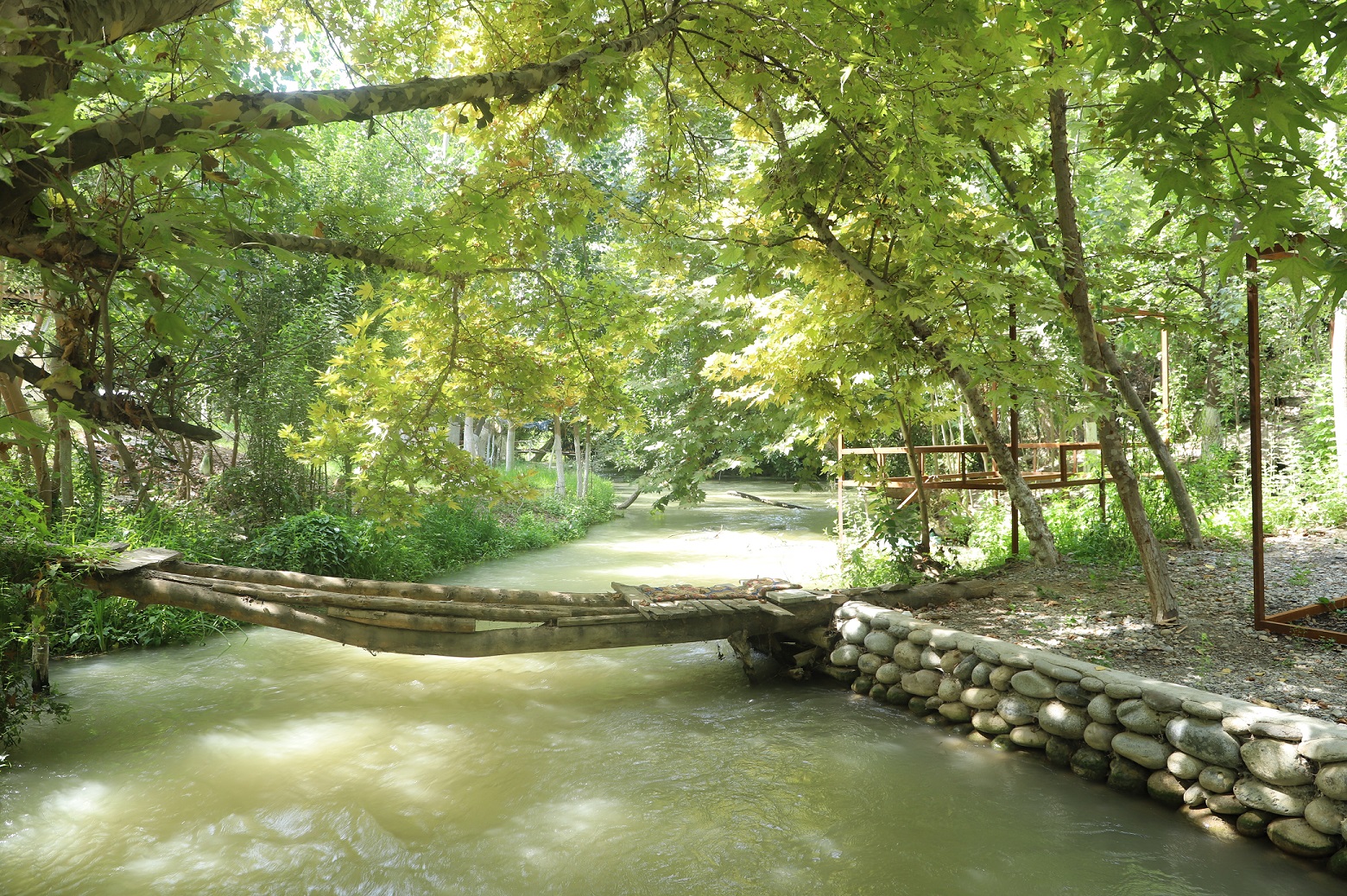
In 1973, the scientist-archaeologist T. Oboldueva conducted excavations on the Khojam Padshah hill for several days. In her report on the Khojam Padshah hill, the archaeologist said: "The monument called Khojam Padshah is located on the south-western side of the village. Many springs were formed as a result of the flow of mountain streams. The height of the hill is 11 m, the area is 80 x 95 m. The upper platform is rectangular 35 x 28 m. A cemetery has been built on a hill in the central part. At the foot of the hill, the remains of burnt bricks are visible. In the lower part, along the river bank, you can see the remains of the building. This means that in the beginning the hill was much larger than it is now."
Excavations have shown that the monument consists of several cultural layers. The upper cultural layer dates back to the beginning of the XI-XIII centuries. Fragments of pottery with red angob were found in the lower layers. This indicates that the archaeological monument is about 2500 years old. A cave was discovered on the territory of the archaeological monument, which used to be a fortress, various legends arose about this fortress that the locals considered it as a place where saints disappeared.
The unique architecture of the monument, the unusual appearance of the hill have become a local attraction. Local residents believe that " the saints lie in these sacred places."
Khojam Padshah Mosque
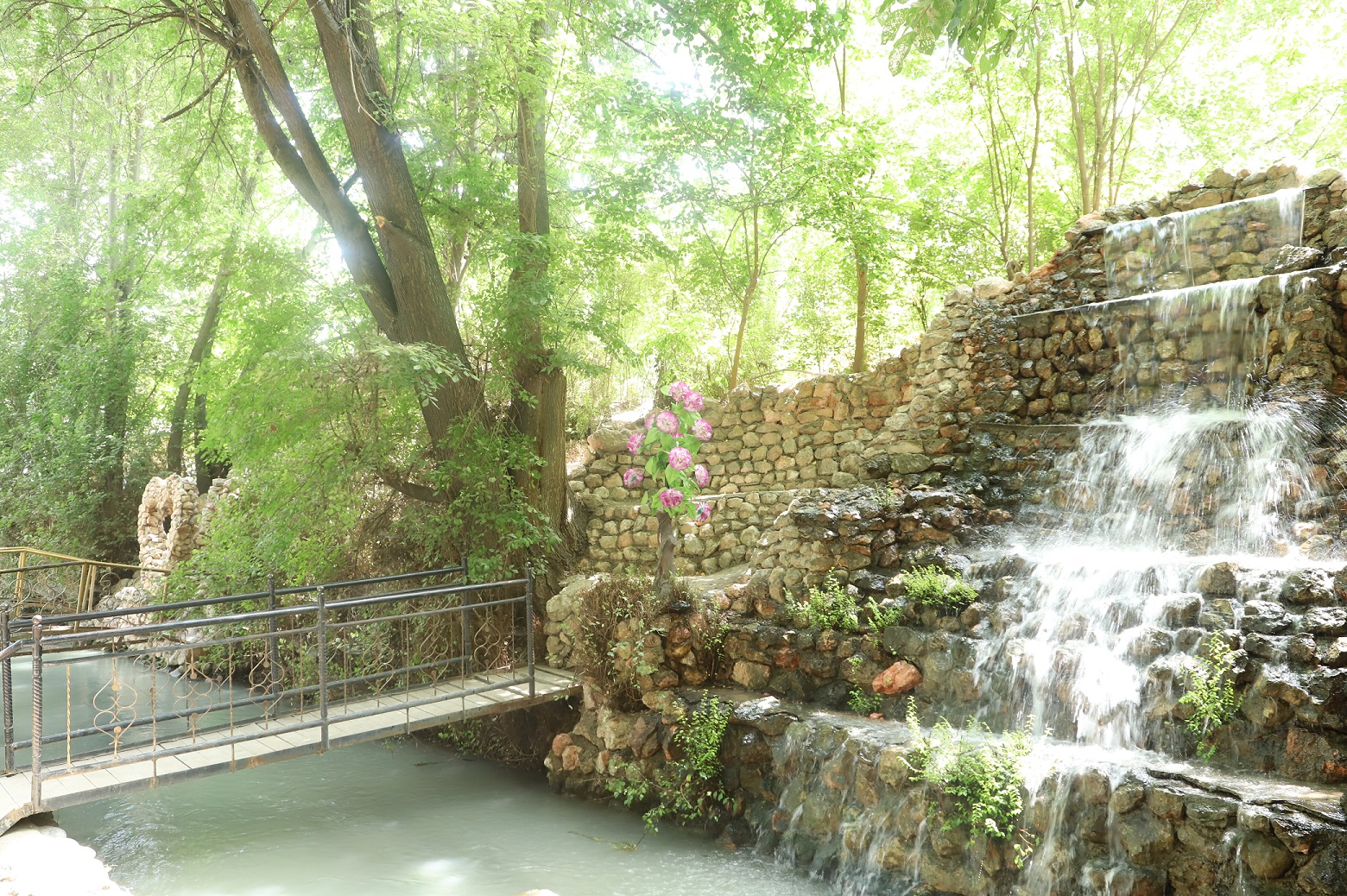
The mosque of the same name of the shrine of Khojam Khan has been preserved to this day. It is built in the style of multi-column open-terrace houses in Ferghana. Attention is drawn to the clear harmony and variety of colors and patterns on the ceiling. It is distinguished by carved wooden columns and figured ornaments. The ceilings are decorated with colorful Islamic patterns on the blue floor. The colors on the beams are dominated by red, and bright flowers stand out in a calm frame. The orange edging in the middle of the ceiling is very effective and at the same time not too complicated, bright ornaments are combined with elegantly decorated patterns on the beams. The mosque was built by order of Ermuhammadboy, a local master, under the guidance of Kholmuhammad, a master from Chimgan, and Muhammad Shokir, a master painter from Andijan. Ermuhammadboy was a very modest person, always wearing a robe and old shoes. Ermukhammadboy was known in the Ferghana Valley as one of the largest donors of his time.
Ancient mill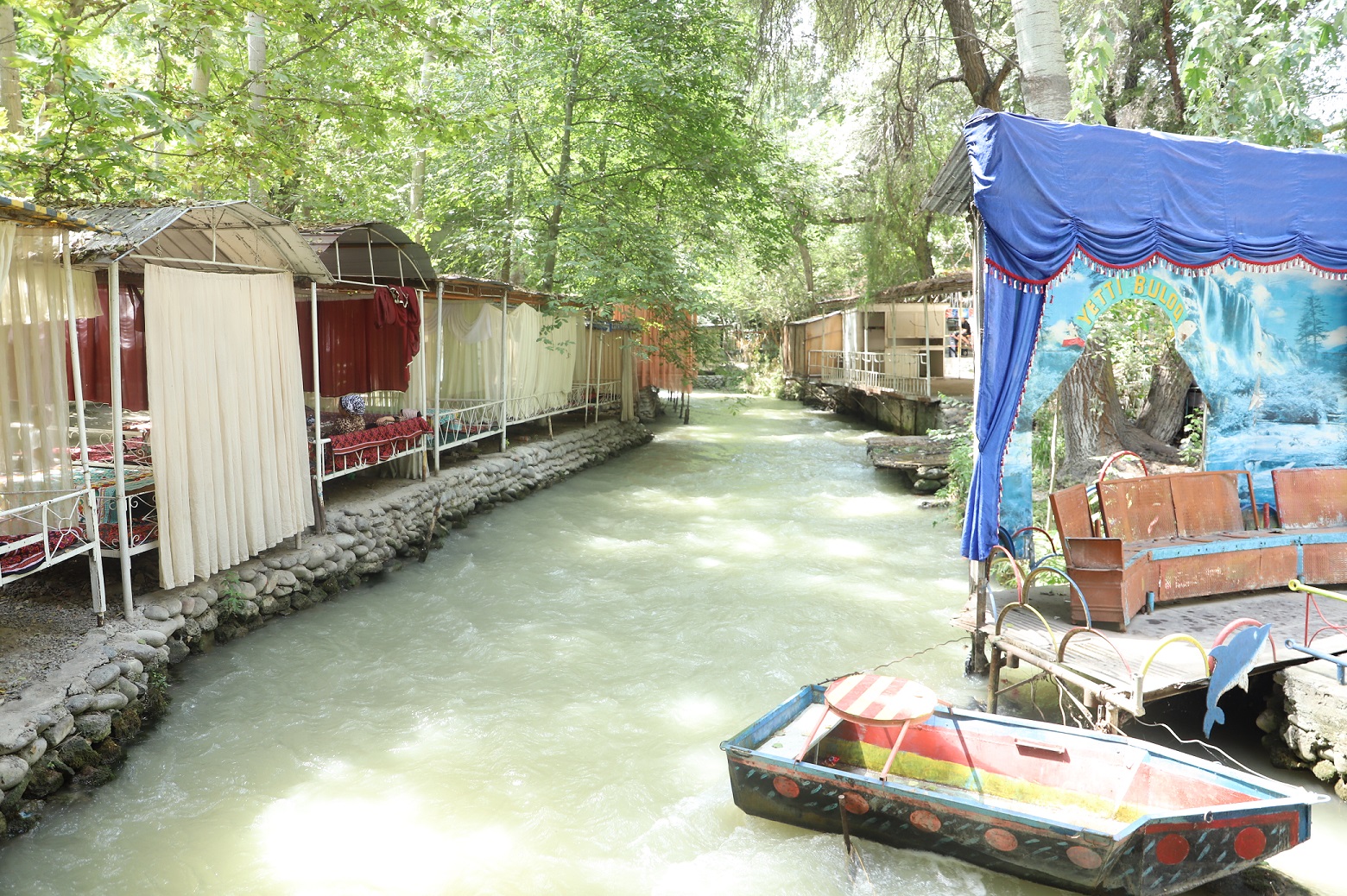
The double mill is located on the territory of the Dilkusho farm in the Ferghana region – it is a unique architectural and engineering hydraulic structure that has preserved its ancient style. At the same time, you can see a mill, as well as special equipment for grinding rice and corn. Thus, in the middle of the nineteenth century, cereals were ground. With the advent of such mills, it was possible to grind cereals with one mechanical movement. Interestingly, it did not require a lot of water pressure to move this equipment. This mill is the only one in the Ferghana Valley that has preserved the old style.
"Yeggi bulok" Sanatorium

The famous sanatorium "Yeggi Bulok"is located on the territory of the village. It has become widely known due to its unique nature. It is located on five hectares in the middle of a coniferous forest, its unique microclimate in the sanatorium allows you to treat the most complex diseases from gastrointestinal to problems of the endocrine and respiratory systems. The sanatorium provides physiotherapy, mineral treatment, hirudotherapy and much more.


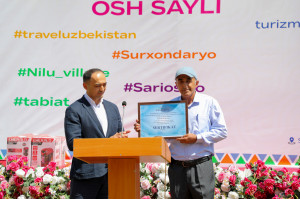
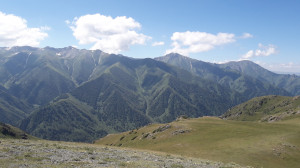
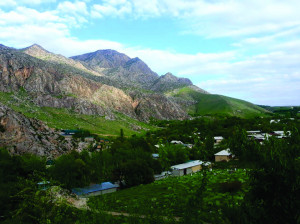





Working hours: 9:00 AM - 6:00 PM, Mon-Fri
For any questions
ПОЛЬЗОВАТЕЛЬСКОЕ СОГЛАШЕНИЕ
1. Определение
Настоящее Пользовательское соглашение (далее — Соглашение) является Публичной офертой в соответствии со статьёй 367 Гражданского кодекса Республики Узбекистан от 21.12.1995 (https://lex.uz/ru/docs/111181#162763) и регулирует порядок использования материалов и Сервисов сайта Государственного унитарного предприятия «Национальный PR-центр» (далее — Предприятие), размещённого на веб-сайте и поддоменах Национального Туристического Информационного Центра: https://uzbekistan.travel/ (далее — Сайт).
Посетитель и (или) Пользователь подтверждает, что ознакомлен, полностью и безоговорочно принимает все условия настоящего Соглашения и обязуется их соблюдать.
Использование Сайта Пользователем означает полное принятие данного Соглашения «как есть» в форме акцепта.
Соглашение вступает в силу с момента посещения любой страницы Сайта и (или) регистрации на Сайте и действует бессрочно во время пользования Сервисами Сайта.
Настоящее Соглашение обязательно для исполнения всеми Посетителями и Пользователями без каких-либо изъятий и дополнительных согласований.
Пользователь обязуется самостоятельно проверять актуальную редакцию Соглашения на Сайте перед использованием Сервисов.
2. Предмет Соглашения
Предметом настоящего Соглашения являются правила использования материалов Сайта и предоставление Посетителю и (или) Пользователю возможности использования Сервисов Сайта.
Предприятие является правообладателем исключительных прав на Сайт в целом и на его составные части, включая все виды контента: логотипы, товарные знаки, тексты, статьи, аннотации, иллюстрации, фотографии, графику, аудио- и видеофайлы, пользовательские интерфейсы, дизайн, структуру, программы, базы данных.
Я прочитал(а) и соглашаюсь с условиями использования сайта и политикой конфиденциальности.
